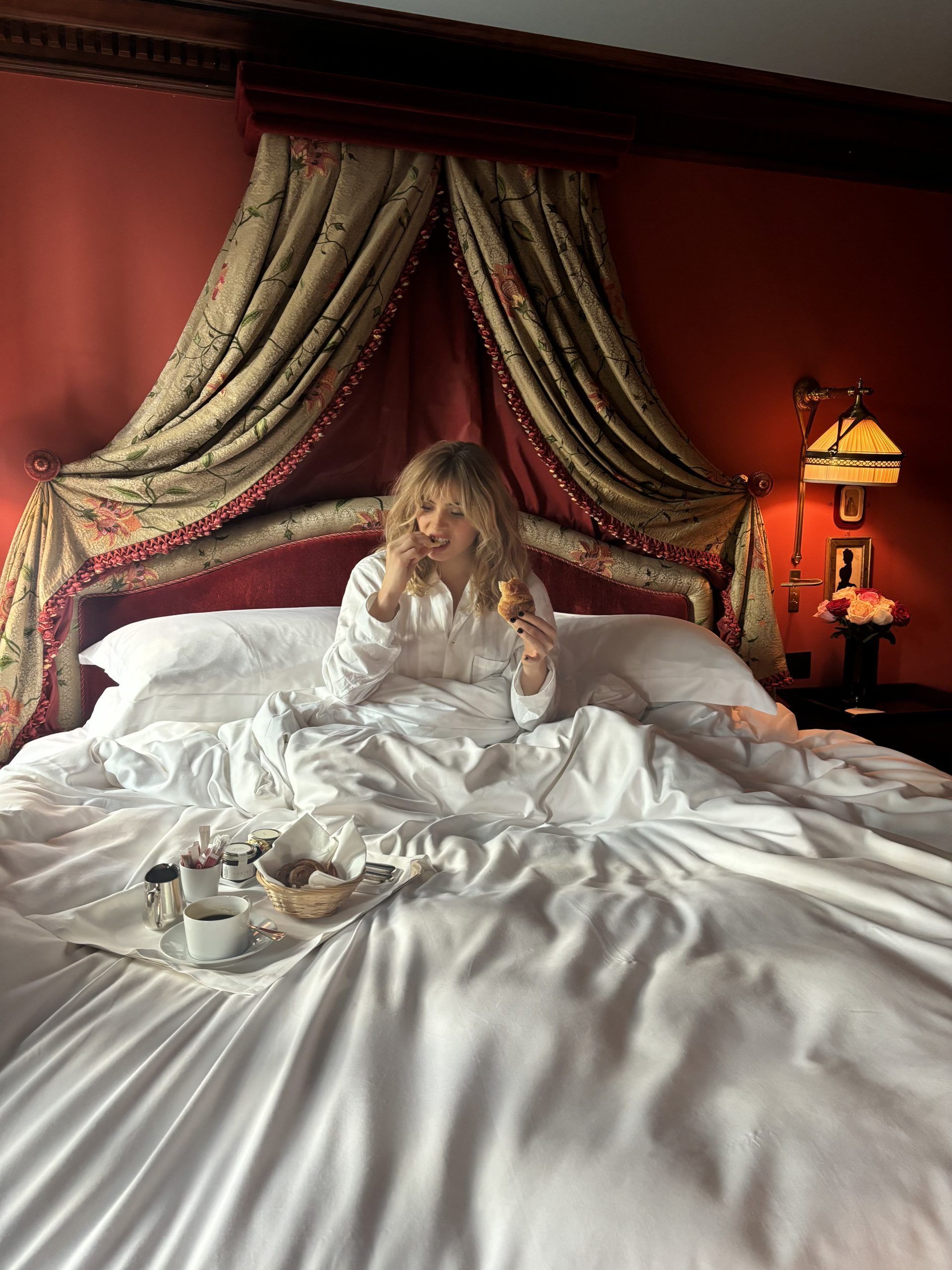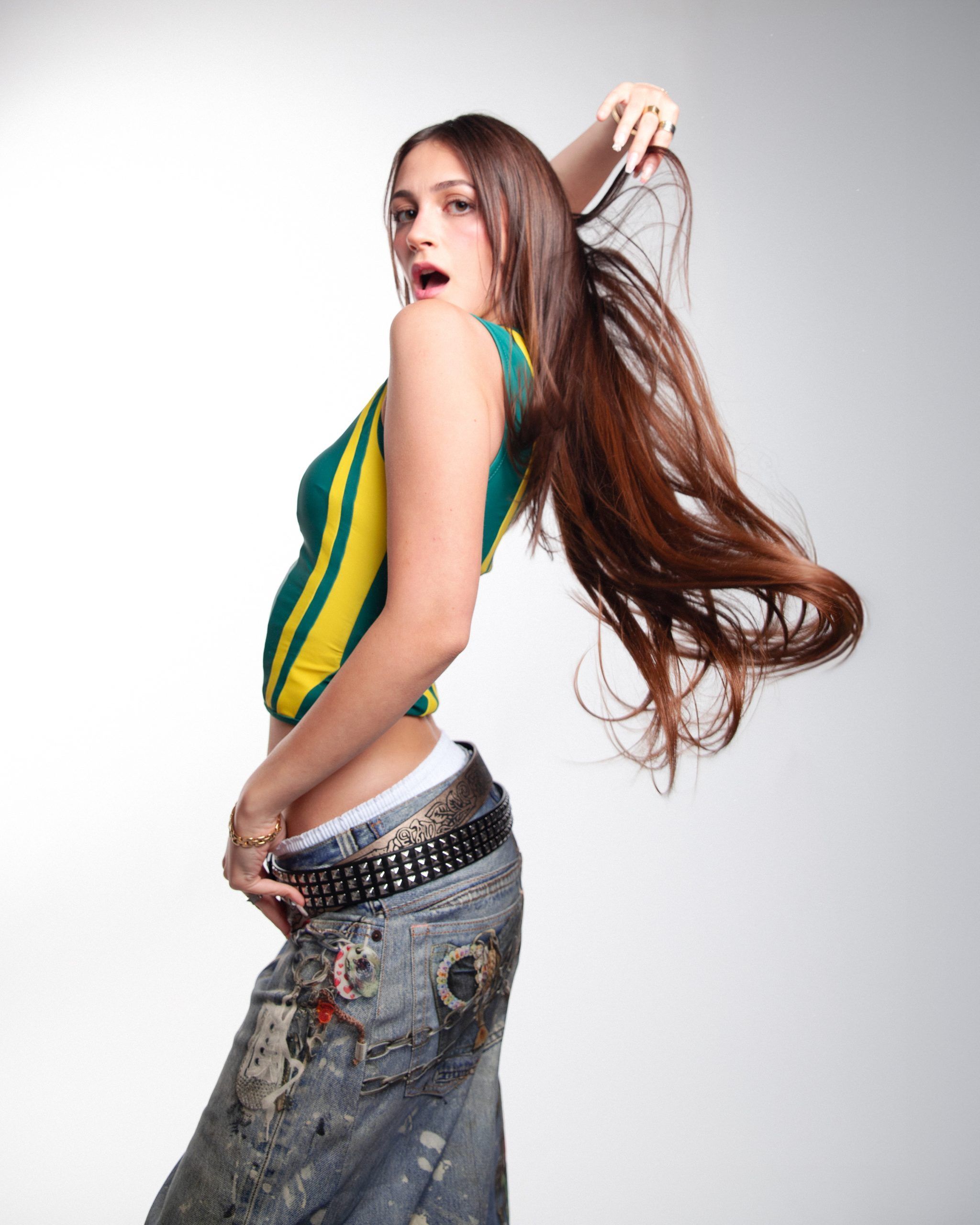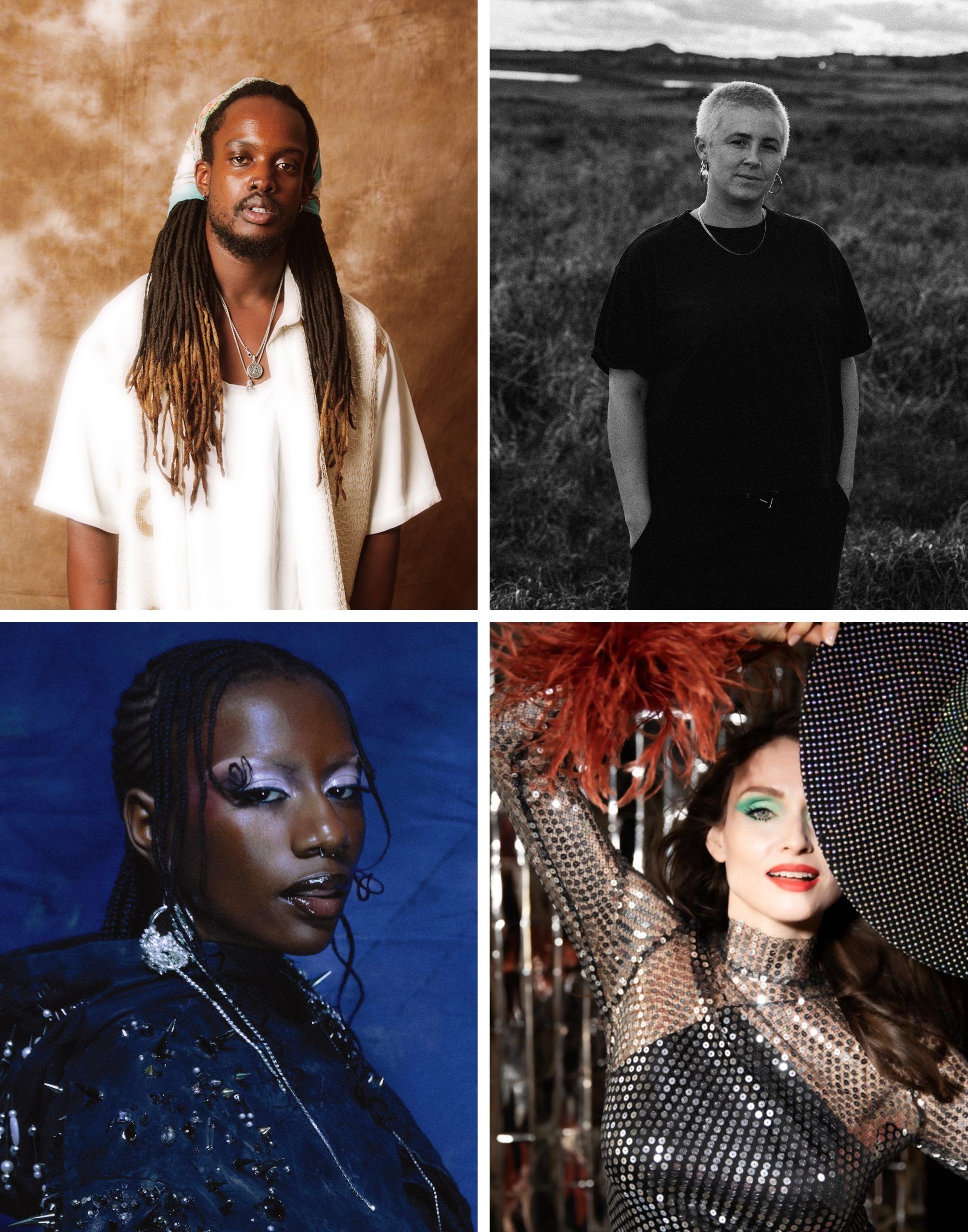A self-taught painter of rare sensibility and acuity, Limerick-born Ian Brennan strips his sitters bare to bring to the canvas their inherent mystery and underlying complexity.
Viscerally raw and gloriously uninhibited, his nudes are as much about the crude beauty of the human form as they are about the soul.
Executed in a style which bears comparison with the work of Lucian Freud (1922 – 2011), Brennan’s paintings retain a distinctive quasi-sculptural quality that adds to their expressive appeal. A poignant, expressive intensity that reflects the artist’s emotional intelligence and ability to bond and connect with the model to lay open the truth stirring beneath the flesh.
A trained psychotherapist, Brennan took on painting as a full-time profession in 2019, after spending almost two decades working a corporate job. Five years on, he is now a household name among art aficionados.
Hailed by critics as one of the most significant emerging artists currently on the scene, Brennan has already been exhibited twice at the London Art Biennale, and in 2021, was awarded the prestigious Chianciano Biennale Award. Later this month, two of his nudes, Hold Your Own and The Recliner, will be auctioned at Bonhams Cornette de Saint Cyr in Brussels as part of The Male Form sales.
Ian Brennan recently sat down with 1883 Arts Editor to talk about his work, influences and future plans.
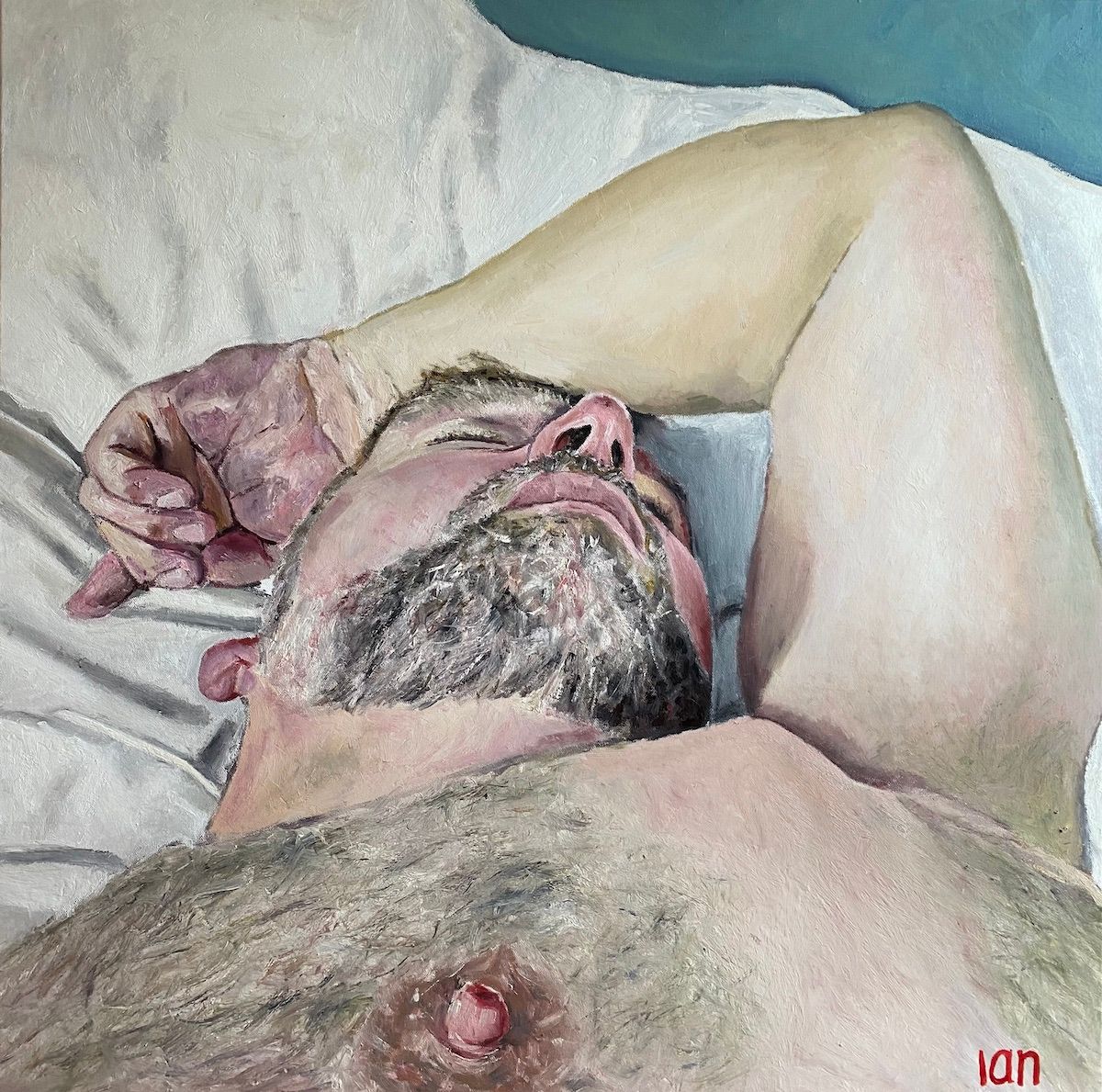
Hello Ian, thank you for finding the time to talk to us. Can you tell us a bit about yourself and your journey into the art world? When and how did you start making art?
Sure, I’m from Co. Limerick in Ireland and grew up in a small village with only two thousand people at the time. I was a shy young boy and felt I could never be myself during the ’80s and ’90s in Catholic Ireland. From a young age, I knew that I wanted to see the world and what it has to offer.
I sketched as a young boy with colouring pencils and sheets of A4 paper that my dad would steal from work. Seeing him arrive home with more than twenty sheets of paper felt like Christmas had arrived! But times were financially tough and art materials were only things I could dream of owning and had no access to. Even something as a canvas was a luxury item back then. To tell you the truth, there were no shops in Co. Limerick that sold canvases!
In secondary school everyone wanted to do art, so the principal put all the names of the students into a hat and unfortunately my name was not pulled out. I parked my dreams aside and pursued a studious six years in school. I never really wanted to go to college, I saw school as a prison where individuality was just not allowed. You had to wear your hair a certain way and wear a horrible uniform and look the same as everyone. If you didn’t you were either a bully or a victim, unfortunately I was the latter.
I did go to university and completed a course in International trade. I worked in global supply chain and procurement for seventeen years. In a way this is exactly how I came to art. I suppressed my creativity for so long that I had a breakdown – or a breakthrough, if you will. At thirty-five I took six months off work to give myself space. It was the best gift I ever gave myself. I only started painting towards the end of the 6 months and the rest is history.
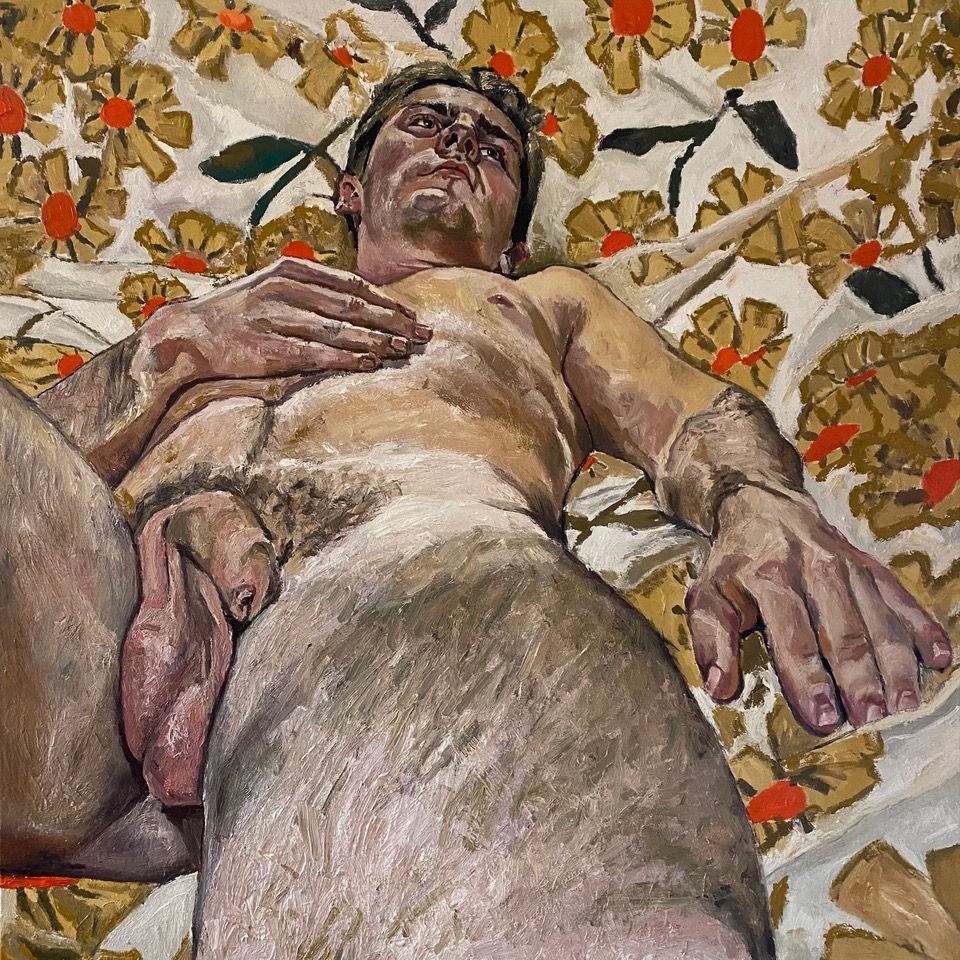
You are self-taught; how did you go about learning your craft?
I’m still learning, I’ll always be learning. Just like a GP, they will always generally be practicing. I don’t think art is something you can learn. We are all artists. If we can park aside our inner critic or judge then the artist will emerge.
The “learning” of art only comes when we give ourselves permission to making art. Had I not bought that canvas and oil paints at the age of thirty-five then I wouldn’t be still learning. I didn’t know six years ago that I could make paintings to the extent that I am making now. Go about creating something that does not exist to go about learning, they’re the same thing,
I read you trained as a psychotherapist in your twenties; I wonder, how does your background in psychotherapy inform your practice?
My background in psychotherapy was the catalyst to me being a full time artist now. I don’t practice as a therapist, but I bring the “work” into my work if that makes sense.
To be an artist is to know yourself. I couldn’t say that I really knew who I was until I trained as a therapist and applied all the learnings and theories to myself. I’ve been in therapy twelve years. It’s changed my life – radically! I bring the depth of my training as a therapist and as a flawed human being into the sittings with the people I paint.
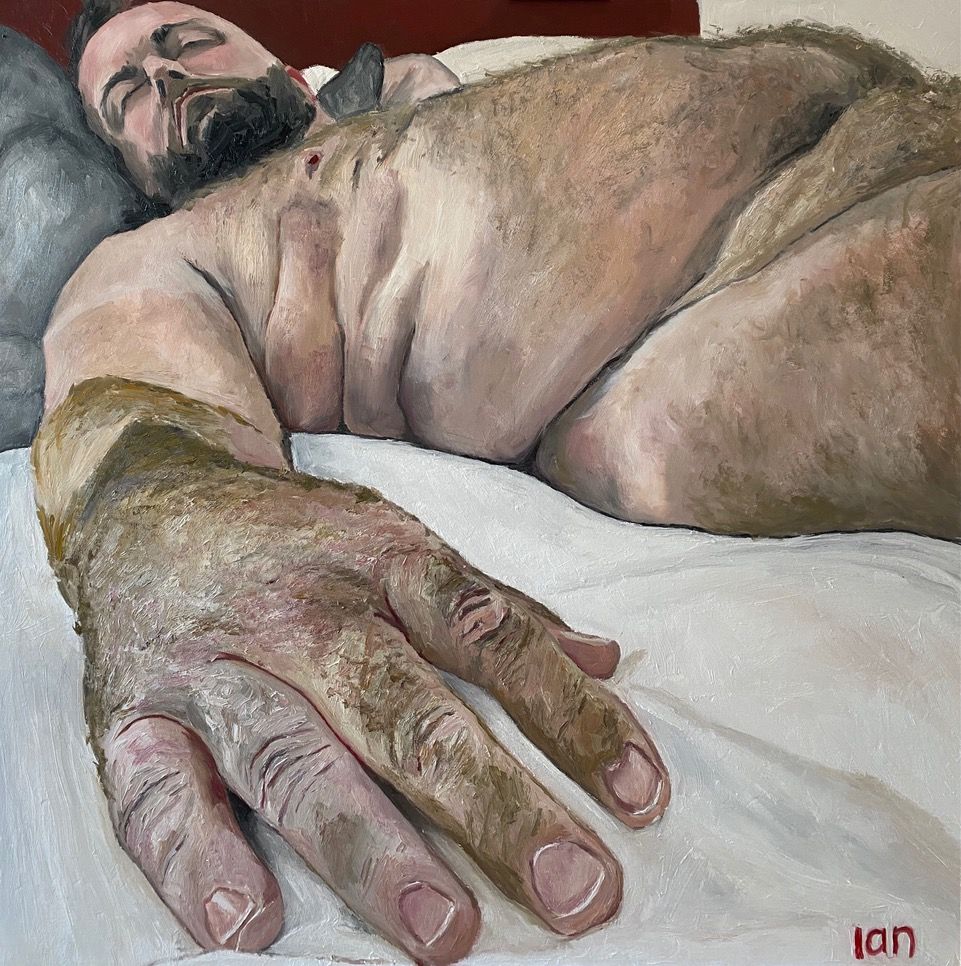
What made you want to leave the corporate world and pursue a full-time career as a painter?
I was being treated very poorly by the director of a company I worked for, and that was the final straw. I thought to myself, “do I want a life or do I want to live?” It’s a fucked up system that we live in, breaking our arses for fuck all thanks and being made to feel like shit on top of it. It was a psychological prison for me working in corporate.
I would paint in the afternoons to feel like a human again. I now see this person as one of the greatest gifts in my life. They were put on my path so that I was forced to see myself and where I had arrived at in life. I remember thinking “do I want to be as unhappy as this person? And if I stay here that’s exactly who I will become.” I didn’t want this for myself.
It pushed me into the art full time. I only painted in the afternoons and weekends up until then. But then I thought – fuck this, I’m out of here and so I left, literally over night. I told myself that I will give myself one year as a full time artist. I’m now three and a half years into it full time and I tell myself this mantra often, It’s easier to digest the gravity of it all. But I do know that this is my life now.
I will never go back to corporate world. It’s not who I am, that’s the difference to being an artist and working for the giants. Now I am the giant! A gentle giant!
How would you describe your art to someone who is not familiar with it yet?
My art is autobiographical. It’s my story and it’s your story. I’ve experienced trauma and pain. I’ve experienced grief, equally I’ve experienced love and compassion and joy. One cannot exist without the other – I’m turning into the therapist now! But it’s true. I’ve come to know that through living it, not from a book or in university.
My work is about life and truth. It’s visceral. it’s ugly and it’s beautiful. It’s contradictory, but everything is. If we can hold this contradiction and be ok with it then I believe we can live fuller lives. I can be kinder towards myself. My work has been healing me, and I would hope that it can heal others who are in pain. In a way I want the viewer to be seen and to witness themselves at the same time. We are all in pain, it’s part of the human condition.
This is ultimately what I want people to see in my work. I want them to have a reaction to it, I want them to feel shame, I want them to feel love – I want them to come out of their heads and into their bodies. I paint the human feelings, covered in flesh. Each painting I make, be it figurative or abstract, is a mirror for which the viewer can see themselves. Whether they really want to look or not is out of my hands. It’s like that boss who was put on my path, when I saw myself in him I changed my path. My paintings are paintings of hope, despite the often shocking representation.
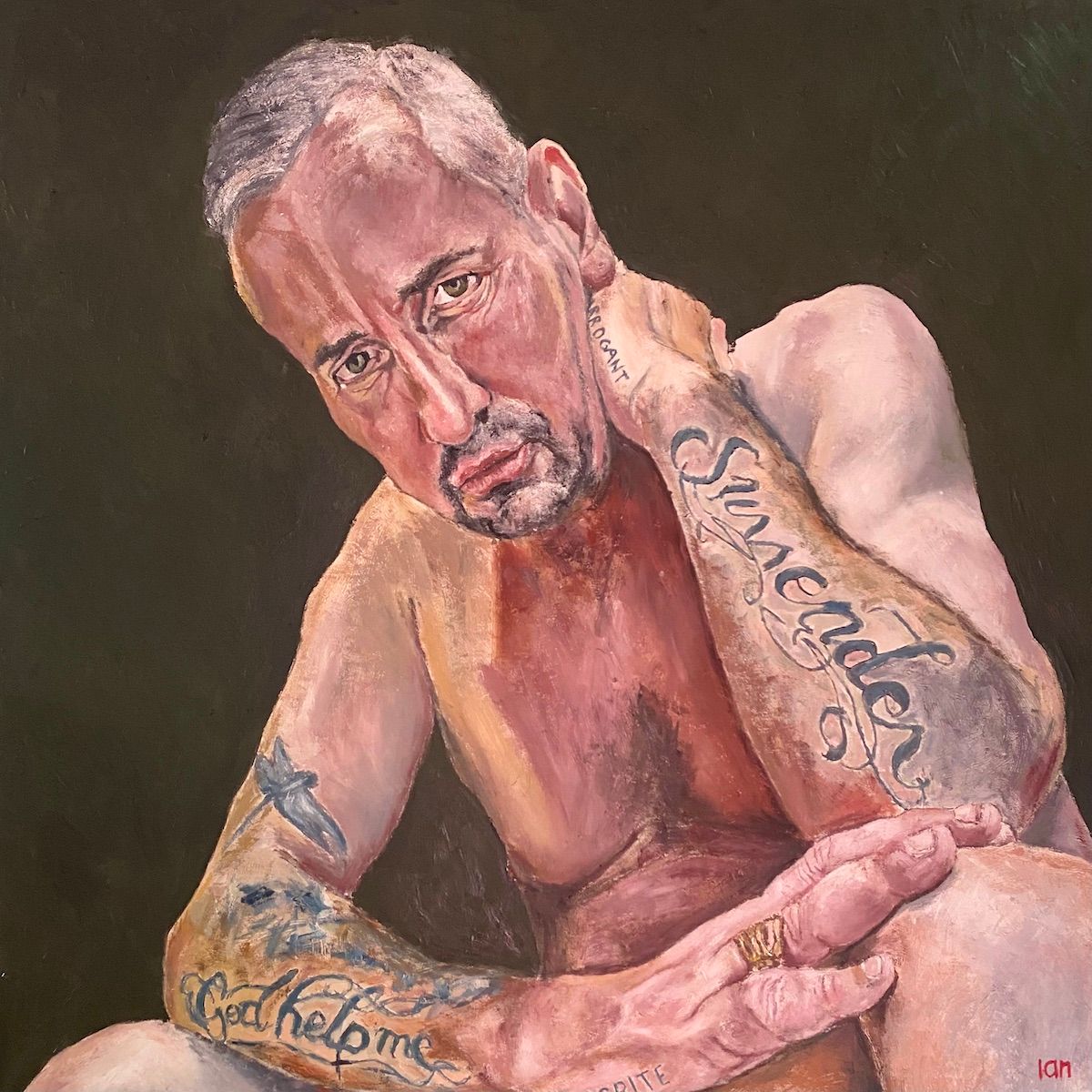
What themes or concepts drive your work?
There’s only one thing that drives my work, and it’s not a concept. It’s the “relationship” – it’s a lived experience. Each piece I create is a response to a lived experience. Be it from a childhood trauma or an explosive relationship with someone in my daily life. Or from my experience of being in nature, a storm, a swim in the ocean, winter, autumn, the stars.
I don’t reveal the narratives behind my work. That’s for you to decide. I guess my pieces are all invitations for the viewer to see themselves. That’s the true beauty of art. If you see something in my work, then it’s something that already exists inside of you. Every piece I have ever created is a relationship of sorts. It can be my relationship with my sitter, my relationship with a lover, my relationship with my family, my relationship with myself.
I have a twin sister and I often tell people that I was in a relationship for nine months in my mother’s womb with my sister. That’s a long time of being cocooned and nurtured, together. From the second I was conceived I only knew relationship. I only exist in the world in this way. It’s a bit mind blowing when I really think about it. So I only know how to paint from the essence of how I was created, so I paint the relationship.
What is your creative process like?
When painting people I create a safe container for the sitter to be wholly themselves. They generally tell me things that they have not confided in anyone else. This becomes part of the work. I then guide them through a body scan and invite them to engage in a witnessing exercise. This means that we stare into each others eyes with no spoken word for a non-specified amount of time. Either the sitter or I can say when it’s too intense and we stop. Tears are often shed, by both me and the sitter. It’s a sacred thing we co-create. It’s beautiful, it’s painful – there’s that contradiction again.
I then take photos and work from photo. The photo emerges exactly as it is meant to. They are never contrived and neither I nor the sitter know what the outcome will be. There’s a massive amount of trust in the container at this stage. Again, the relationship emerges as being the driver of the work. It might only be for two hours but the relationship becomes the art.
When I paint abstracts I already have this container inside of me. When I paint in this way, I turn into a bit of a lunatic. I cannot be in my head. I have all my materials lined up and sometimes I don’t even know what colour I’m painting with. It’s a surrendering on a different level. I’m giving myself to the work. I almost feel like I’m not really there when I paint in this way.
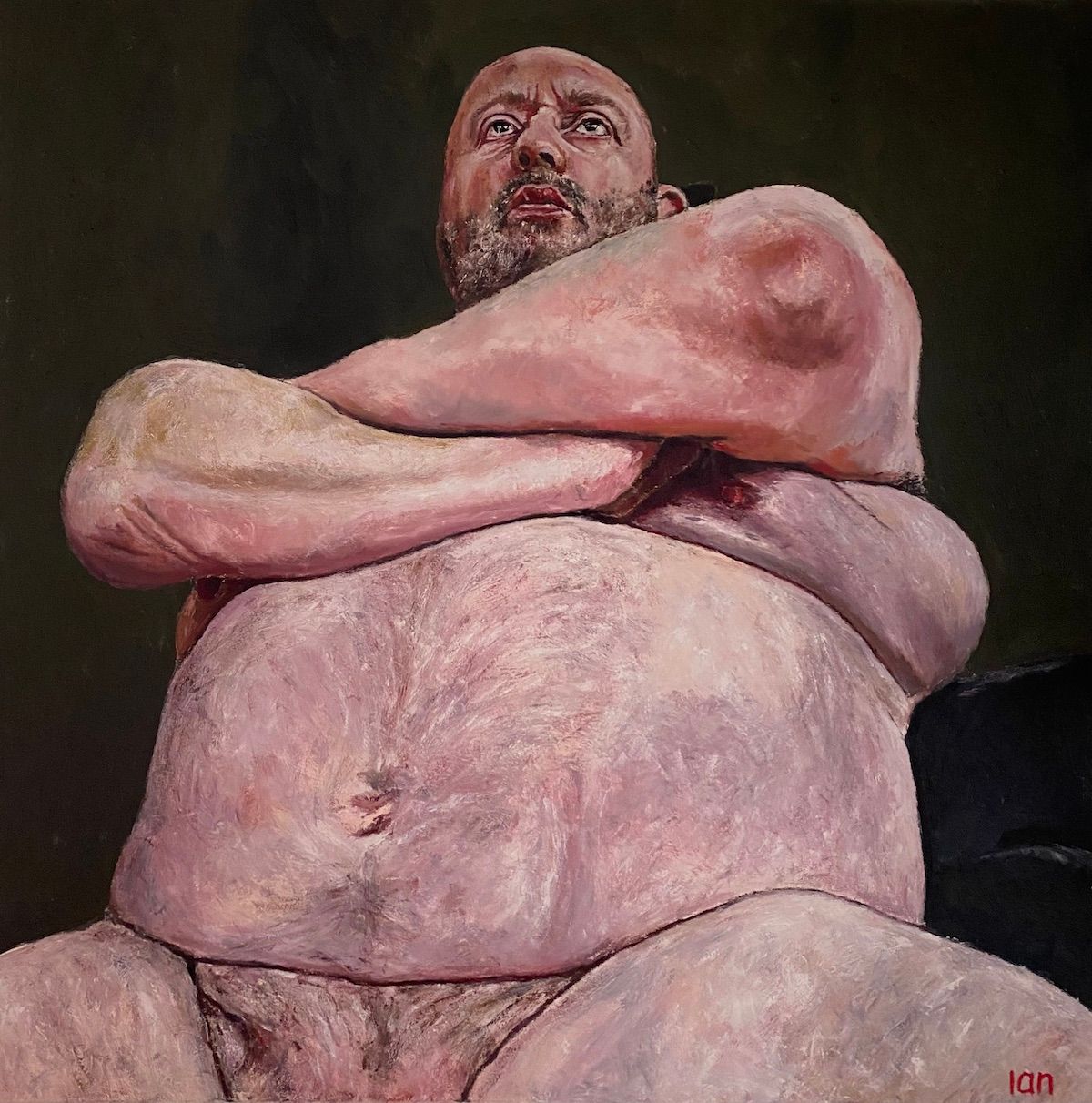
And what artists would you say have most influenced your work?
When I started painting I didn’t really know a whole lot of artists, which Is kinda shameful to say, but it’s the truth. When I made figurative pieces people would tell me that they were reminded of Lucian Freud’s work. And so I Googled him.
It’s kind of a bit mad that his Grandfather was Sigmund Freud, and that I trained as a therapist and now my work is compared to Lucian. Last year, his assistant of twenty years and now artist in his own right, David Dawson invited me to Freud’s studio, which is not open to the public. I got to walk barefoot on the floors he painted from and see his trolley and brushes and the wrought iron bed that people lay on. It was a real pinch me moment.
Dame Tracey Emin is the other artist who influences my work. And when I say influences, it goes a bit deeper. She changed my life. I applied for her art residency in Margate about eighteen months ago and she invited me to meet her face to face at her studios. I got an hour of Emin’s time and critique. She told me that out of the thousands of applicants I was the only artist at the interview with no formal education.
Now I live up the road from Emin and have my own studio in Margate. It’s absolutely crazy, but that’s how it is. There’s a creative energy to Margate, you need to visit to feel what it is I’m talking about. I can see Turner’s paintings unfold in the skies here when I walk home from my studio in the afternoons. It’s magical.

And finally, what does the future hold for you?
If you told me three years ago that I would represent Ireland twice at the London Art Biennale, win an award at one, exhibit in Italy, have DJ Fat Tony sit for me, walk barefoot on Lucian Freud’s floorboards, have the world’s most famous muse, Sue Tilley, sit for me, exhibit my one million pound painting in Saatchi Gallery, and get to sit face to face to chat with Tracey Emin, I would not have believed you!
On the 25th of this month my work is going under the hammer at Bonhams in Brussels as part of The Male Form sales, along with works by Salvador Dali, David Hockney, Auguste Rodin, Andy Warhol and Yves Saint Laurent. So I would say that the future is very bright! I’m making a lot of work here in my studio in Margate. I’ve had a lot of interest from agents, galleries, advisors from America to Zurich. I’m not letting these offers distract me. I’m making the work at my own pace and when I’m ready I’ll reach out to one of these for a solo show.
I trust in the unfolding and in divine timing. This is how I have arrived to where I’m at. I had to wait thirty-five years to become an artist, so the world will have to wait patiently for my big solo show that I’m working towards. It’s going to be powerful and I have some “interesting” people who have already sat for me and some who I am yet to paint. That’s all I can say about that for now.
The Male Form sale will take place at Bonhams, Brussels, on 25th June, starting at four pm CEST.
Further information about Ian Brennan at ianbrennanart.com
Further information about the auction at bonhamns.com
Interview Jacopo Nuvolari
Featured image: Ian Brennan, photo by Stephen Daly


